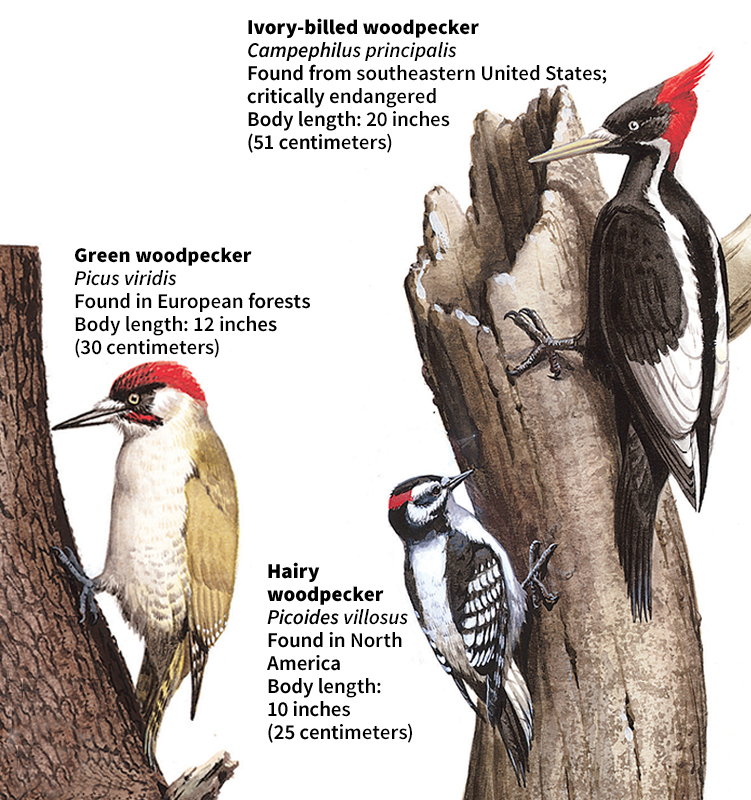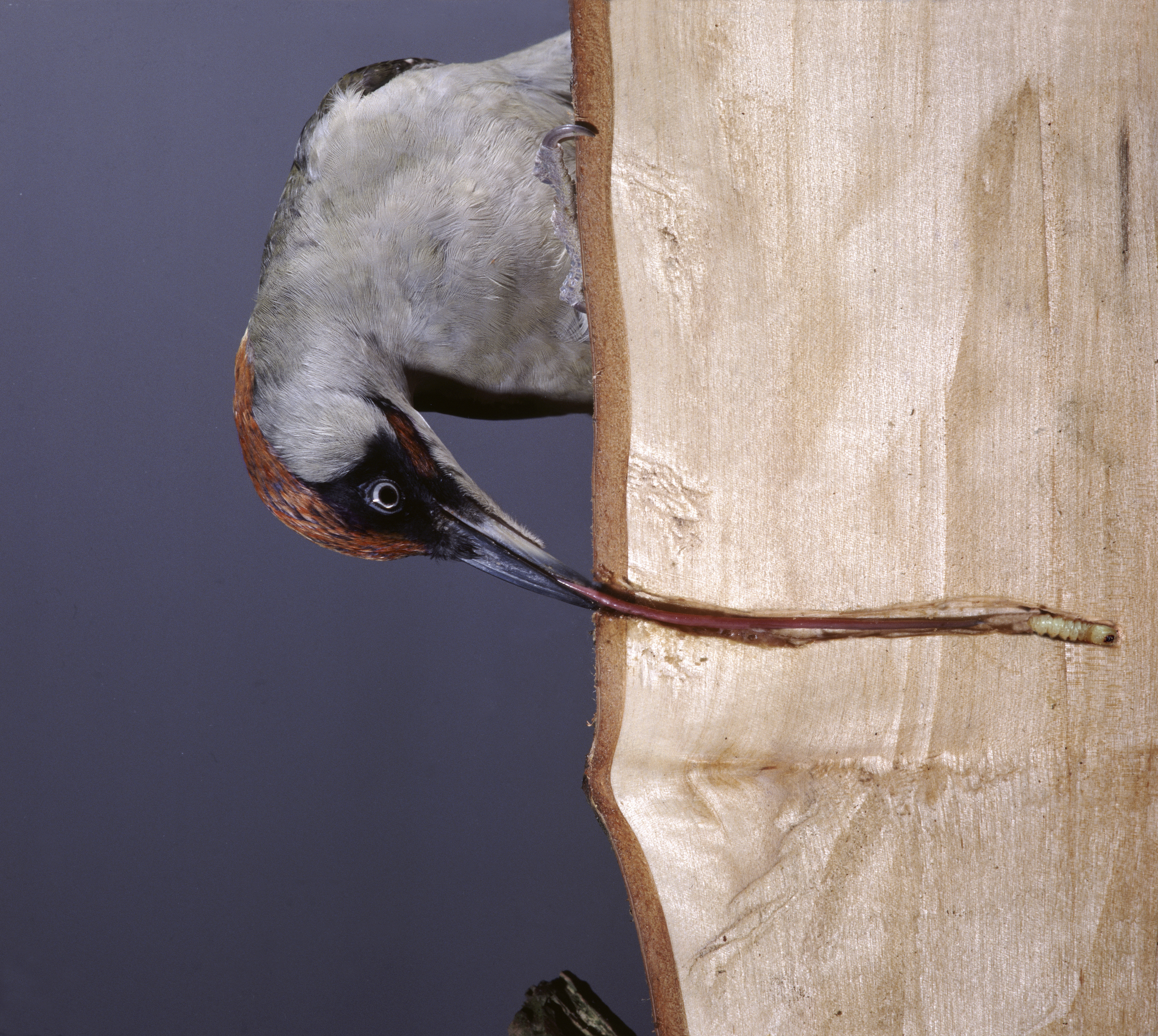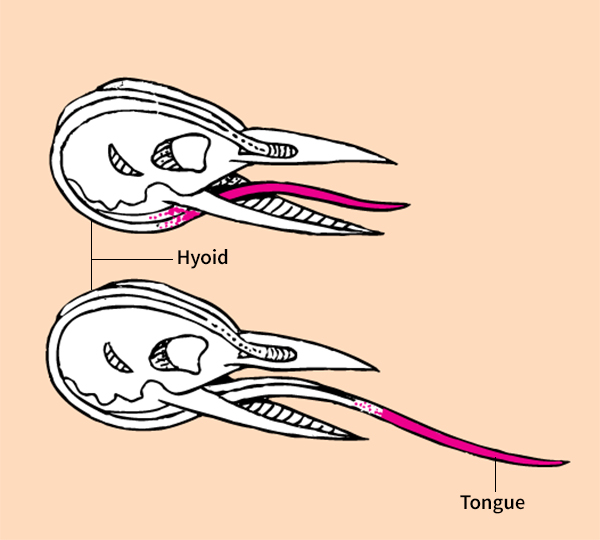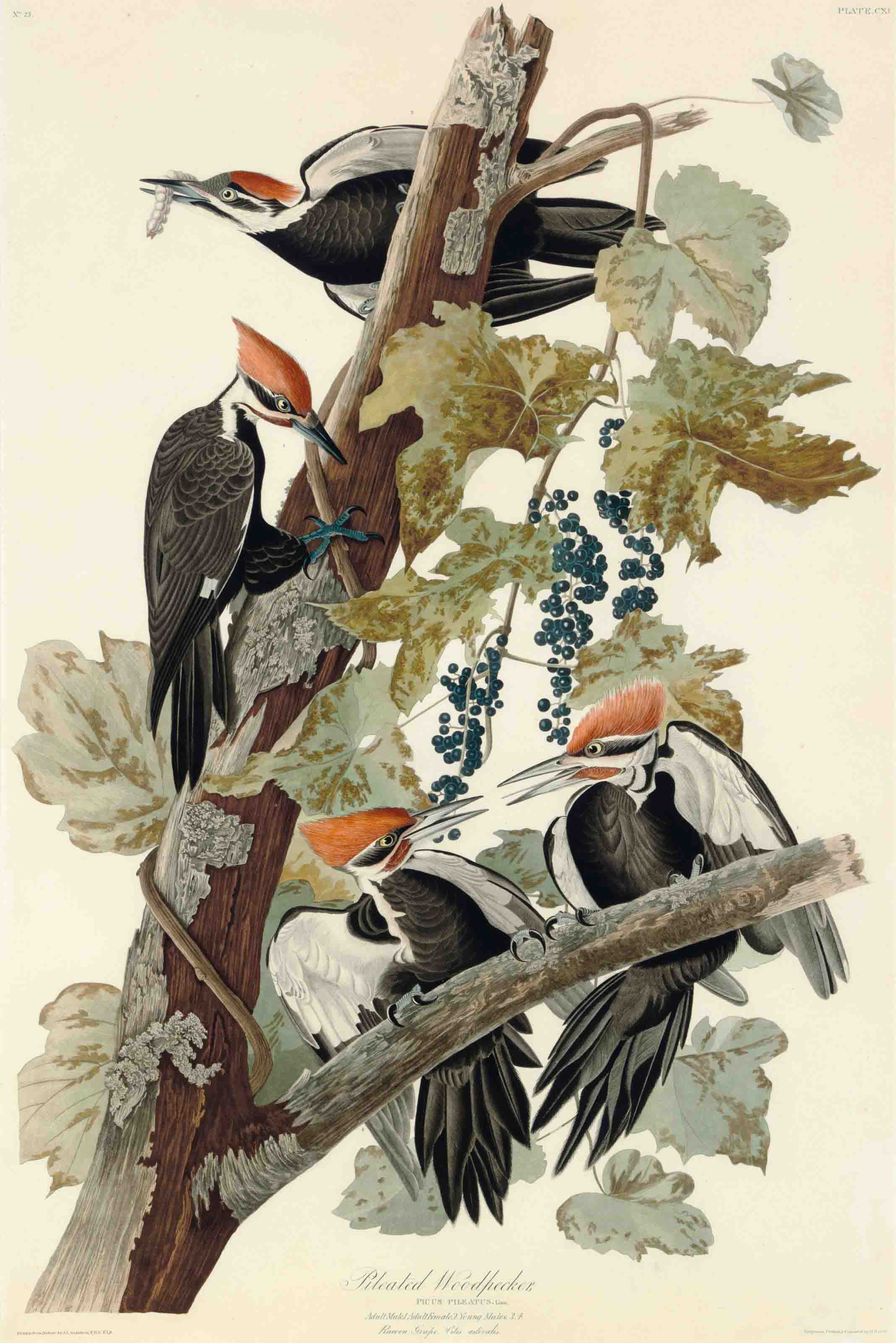Woodpecker is a bird that uses its long, chisellike bill for drilling into trees. Woodpeckers bore holes in bark and wood to find food and build nests. These small- to medium-sized birds live in almost all parts of the world.

Body.
Woodpeckers have several features that are especially useful to their way of life. Strong feet and sharp claws enable the birds to climb up and down tree trunks and to cling to bark. Most woodpeckers have two front toes and two hind toes, an arrangement that helps them to climb without falling backwards. Stiff tail feathers brace the birds against the tree trunk. Strong neck muscles propel the bird’s head rapidly back and forth while it drills. Muscles on the head act as shock absorbers, protecting the skull from the impact of drilling.
Many woodpeckers are black and white or brown and white, and many are banded or spotted. Males of most species have some red feathers on their head.

Habits.
Woodpeckers use their bill to probe bark and wood for the adult insects and insect larvae they eat. They draw the food out with an extremely long, sticky tongue that has a barbed tip. Some woodpeckers also catch insects on the ground or in the air. In addition, many woodpeckers eat fruit and nuts. The wood-boring insects that woodpeckers eat are available the year around. For this reason, few woodpeckers migrate.

For nests, woodpeckers dig holes in the trunks of trees or, sometimes, in the ground or in buildings. The nest may extend 6 to 18 inches (15 to 45 centimeters) below the entrance. It has no lining except for wood chips. A female woodpecker lays two to eight white eggs.
A woodpecker’s call consists of a series of harsh notes. The birds also drum with their bills on dead branches or on anything hollow. They use this sound to advertise their presence and defend their territory. Except for nesting pairs, most woodpeckers live alone.
Woodpeckers occasionally damage buildings and trees when they dig holes in them. However, woodpeckers are mostly beneficial to human beings, feeding upon insects that damage timber and agricultural crops.
Kinds.
There are about 200 species of woodpeckers, but only about 20 species live in North America. Their habitat ranges from evergreen forests to arid deserts.
The large ivory-billed woodpecker once lived in swampy forests of the southeastern United States. Logging has destroyed most of its habitat, and scientists believe that the bird is either critically endangered or extinct. Some people mistake the male pileated woodpecker for the ivory-bill because both birds have red crests on their heads. However, the pileated woodpecker remains fairly common in North American forests. The acorn woodpecker of the western United States drills holes for storing acorns, which it eats when other food is scarce. The redheaded woodpecker of the eastern and midwestern United States has a bright-red head and neck. It also stores nuts and corn for the winter. Flickers are among the most common North American woodpeckers. They feed mainly on the ground and are especially fond of ants.

